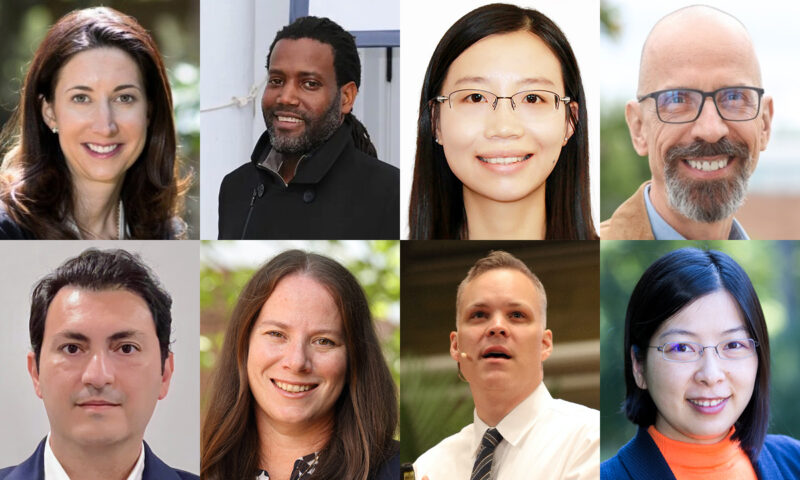 By Jennifer Stover
By Jennifer Stover
Advanced technological tools, the gig economy, and other contemporary ways of working may give us a more experimental way of problem-solving and organizing teams. New research by Commerce Professor Sarah Lebovitz and her colleagues shows that despite ambiguity, an extremely limited timeframe, and a lack of predefined structures, teams can innovate and successfully develop novel tech products.
Lebovitz and her co-authors discuss their findings in “Minimal and Adaptive Coordination: How Hackathons’ Projects Accelerate Innovation Without Killing It,” published in the June issue of the Academy of Management Journal. The authors followed 13 health-tech projects across two assistive-technology hackathons, finding that, contrary to existing research, “messy” teams with less coordination performed better under extreme time pressure, while highly organized teams failed.
The results show the benefits of putting aside established project management approaches if creative solutions are needed quickly. Successful teams didn’t worry about perfection while innovating. And they didn’t just work faster; they also worked differently. By forgoing their known structures and embracing the time restrictions, they found a way to solve challenges that others can learn from to deliver meaningful products.
Hackathons: Working at Warp Speed
Many hackathons, which allow programmers and others to come together for a short period of time to solve challenges, have a specific goal to create functioning software or hardware products by the end of the process. The hackathons that Lebovitz and her co-authors observed were organized to develop real-world assistive-technology devices for individuals with disabilities.
Volunteering from a variety of backgrounds, including computer engineering, industrial design, mechanical engineering, business, art, and education, participants on 13 teams didn’t know anything about the hackathon challenges ahead of time, and most hadn’t previously met. With only 72 hours to create functioning products, they worked in makerspaces equipped with 3D printers and other technologies, but were not given a defined process or schedule.
Trapped: The Projects That Failed
With only three days to complete the projects and no clear direction, the teams took different approaches. Seven teams attempted to use defined plans, regular communication, and highly coordinated product development processes (e.g., Agile), but condensed them into the 72-hour timeframe; these teams didn’t produce a working product.
While previous research says coordination should work, the authors found that standard practices hindered the teams in these conditions when they faced inevitable time crunches and technical difficulties. Tightly coordinated work required redefining the process with each new obstacle, and with limited flexibility, they were stuck in the processes and couldn’t easily adapt to challenges.
The Key to Winning in a Fast-Paced Work Environment
Assuming that an accelerated product development timeline would require a totally different way of working, six other teams didn’t attempt to use set methods to get their results. Rather than work through known phases that are effective in other settings, they focused on solving problems just as they arose and tackled each task one at a time, with next steps emerging organically as they went along. As one participant said, “We need to solve this problem, but how we get from here to there is pretty open.”
The outcome? Three teams built fully functional products, and three produced functional prototypes. At the end of the hackathons, the three fully successful teams created a product to motorize and maneuver a manual wheelchair, a device to remotely control an oxygen backpack, and a device that fits inside the mouth of a person without limbs to enable performing daily tasks like grabbing.
The three teams that built full products used what the researchers call “adaptive coordination,” starting out with minimal communication, but swiftly adapting as time went on to allow for brief, impromptu check-ins. Exchanging information on the fly as new ideas and issues came up—and making quick adjustments to their work through spontaneous sharing and prompts—they realized the positive results of gradually aligning work over the course of the project. The adaptive coordination process was often messy and occasionally created misunderstandings, but was flexible enough to allow the teams to overcome challenges, Lebovitz and her fellow researchers observed.
Lessons for Today’s Workplace
While current research into innovation is rooted in practices from the Industrial Revolution and mass production, Lebovitz and her co-authors point out, their study illustrates how innovation can thrive in less-structured, fast-paced conditions full of technological hurdles often present in the modern work world, such as with gig work and on-demand labor.
The authors also suggest that adaptive coordination might be effectively applied in today’s work environments and serve as a model for less structured teams. Further, they encourage reevaluating processes and the use of advanced technologies when speed and cost are factors.
The authors conclude that more research into the evolving nature of technological work and ways to accelerate innovation is needed. With minimal communication at the hackathon’s start, the three successful teams accepted the uncertainty inherent in their projects, adapting to their unusual work environment and coordinating just enough to solve their challenges. Such a process won’t work for every project, but new ways of working could be especially helpful to teams looking to speed up innovation and solve urgent problems.


